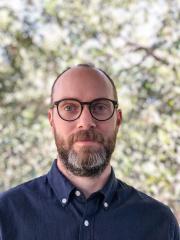Associate Professor Krison Rennie

Associate Professor Krison Rennie researches medieval history in the School of Historical and Philosophical Inquiry.
Kriston's project is titled "After the Whirlwinds of War": Remembering Monte Cassino, 529-1944. The Benedictine abbey of Monte Cassino (est. 529) is defined by war and its aftermath. Between the sixth and twentieth centuries, this northern-Italian religious community experienced a cycle of atrocities and annihilations, which forever transformed its identity. A target of repeated outside aggression, the abbey was attacked, destroyed, abandoned, rebuilt, re-populated, and re-consecrated on several occasions. As a direct result, the Lombards (6th century), Saracens (9th century), Normans (11th century), French Revolutionaries (18th century), Italians (19th century), and Allied Forces of World War II (20th century) are instrumental characters in sowing the abbey’s historical and cultural landscape. As vehicles of collective memory, these infamous episodes frame Monte Cassino’s past in both diachronic and synchronic terms. As component parts of a rich cultural and historical tradition, moreover, they contribute a version (or versions) of history, whose representation and interpretation in the present owes considerably to the abbey’s ‘destruction’ and ‘recovery’ over the past fourteen hundred years.
Kriston's project examines the development and impact of creative memory and identity. It uses this framework to examine the intersecting narratives comprising Monte Cassino’s past. It takes particular interest in constitutive acts/elements/texts/memories that invoke the abbey’s inner unity, both real and imagined (myth/legend). And it fundamentally questions historians’ role and responsibility in fashioning the abbey’s longer, cumulative, and linear history, a tradition explained in monastic, Christian, Italian, military, and international terms. With a focus on both medieval and modern history and its historiography, sociology, cultural heritage studies, and architecture, therefore, this project asks how a past so clearly broken has been carefully reconstructed. It asks how the past is remembered and forgotten, questioning not only the resulting narrative construction, but also how this process has transformed the abbey and its representation over time.
The Fellowship will allow Kriston to immerse himself in the primary evidence and relevant historiographical literature and to draft a preliminary first chapter and introduction to his book.
